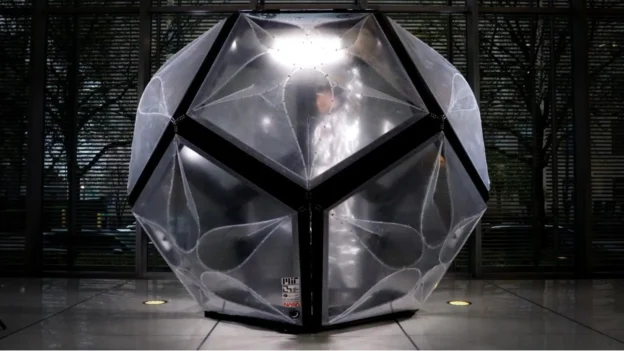Scientists at MIT Media Labs have released details about their self-assembling lunar habitat project called “Momo”. This project is in sync with the Artemis 3 mission, planned for 2026-2027, when the first lunar landing with two astronauts is expected. Momo aims to provide a small, semi-permanent shelter on the Moon, facilitating space exploration prior to the establishment of a definitive lunar base.
Momo Lunar Habitat Project Objectives
One of the main objectives of the Momo Project is to increase the Technology Maturity Level (TRL) of prefabricated lunar habitats. These habitats are designed to be used by the temporary workforce on the Moon. Improving the TRL ensures that the necessary technologies are ready and proven for future lunar missions.
In addition, the project has focused on meeting the minimum essential requirements to ensure survival in the harsh lunar conditions. These requirements include a bathroom, i.e. adequate sanitary facilities for astronauts, beds with comfortable resting spaces and finally, recreation space where astronauts can relax and enjoy recreational activities.
Momo Project Design
Project Momo is designed to ensure survival and also to assist astronauts in building a long-term lunar settlement. This semi-permanent approach will allow the creation of more durable and robust foundations in the future.
The Lunar South Pole has been identified as the ideal site for the construction of these long-term settlements. This region is strategically important due to its near-constant exposure to sunlight, which is vital for power generation and mission sustainability.
Who designed the self-assembling lunar habitat project?
The Momo Project design team includes Mateo Fernandez, Kevin Dunnell, Adam Boldi, Katie Chun, and Alfonso Parra Rubio, who have worked tirelessly to turn this vision into reality. In the following video of Fernandez you can see what this innovative lunar habitat looks like.

The facility includes a bathroom, a bed and a recreation space. Source: Mateo Fernandez
In addition to the Momo project, the MIT Media Labs is investigating 3D printing technologies to build lunar infrastructure using resources available on the lunar surface. This complementary initiative seeks to reduce the need to transport materials from Earth, which could be a paradigm shift in lunar colonization.
Follow us on social networks and don’t miss any of our publications!
YouTube LinkedIn Facebook Instagram X
Source and photo: mediamit


